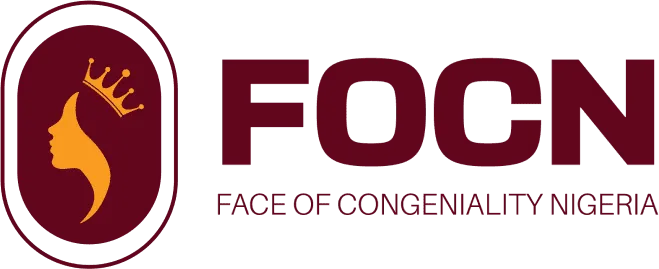In today’s competitive workplace, confidence isn’t just about what you know- it’s about how you communicate what you know. The words you choose can either elevate your professional presence or undermine your credibility before you even finish speaking. For emerging leaders, mastering confident communication is the bridge between having great ideas and seeing those ideas implemented.
Research from Harvard Business School reveals that confident communication directly correlates with career advancement, with professionals who speak assertively receiving 23% more promotions than their hesitant counterparts. The good news? Confidence in communication is a learnable skill, and it starts with transforming the language patterns that may be holding you back.
Why Your Words Matter More Than You Think
Every conversation at work is an opportunity to demonstrate leadership potential. When you consistently use tentative language, apologetic phrases, or self-deprecating expressions, you inadvertently signal to colleagues and supervisors that you lack confidence in your abilities. Conversely, strategic language choices can position you as a decisive, solution-oriented professional ready for greater responsibilities.
The language we use shapes not only how others perceive us but also how we perceive ourselves. Neuroscience research shows that confident speech patterns actually reinforce confident thinking, creating a positive feedback loop that enhances overall professional performance.
10 Game-Changing Language Reframes for Professional Confidence
1. Replace Apologetic Interruptions with Purposeful Requests
Instead of: “Sorry to bother you…”
Say: “Do you have a moment to discuss this project?“
This reframe immediately establishes that your request has value and merit. You’re not bothering anyone, you’re engaging in purposeful professional communication. This approach shows respect for their time while maintaining your own professional dignity.
2. Transform Uncertainty into Confident Recommendations
Instead of: “I think maybe we could...”
Say: “I recommend we...”
Decisive language signals leadership thinking. When you present recommendations rather than tentative suggestions, colleagues are more likely to view you as someone capable of making important decisions. This shift from hedging to asserting demonstrates analytical confidence.
3. Reframe Learning Opportunities as Professional Growth
Instead of: “This is a dumb question…”
Say: “I’d like to understand…”
Self-deprecating language undermines your credibility before you even ask your question. Curiosity and the desire to understand are signs of intellectual strength, not weakness. This reframe positions you as someone committed to thorough understanding and quality outcomes.
4. Show Commitment Through Strategic Planning
Instead of: “I’ll try to get this done...”
Say: “What can I deprioritize to get this done for you?”
This powerful reframe demonstrates several leadership qualities simultaneously: commitment to results, strategic thinking about resource allocation, and proactive problem-solving. You’re not making excuses- you’re managing expectations and showing dedication to success.
5. Invite Engagement Without Showing Doubt
Instead of: “Does that make sense?”
Say: “Would you like me to expand on any points?”
The first phrase suggests you doubt your own clarity. The reframe positions you as a thorough communicator who values understanding and is prepared to provide additional context. It shows confidence in your message while inviting productive dialogue.
6. Set Clear Expectations Instead of Passive Check-ins
Instead of: “I just wanted to check in on…”
Say: “When can I expect an update about…”
This reframe transforms you from a passive follower-upper into someone who manages timelines and expectations. It shows that you understand project management principles and are comfortable establishing accountability measures.
7. Embrace Growth Mindset Language
Instead of: “I’m not good at…”
Say: “I’m currently improving my skills in this area.“
Fixed mindset language (“I’m not good at”) suggests permanent limitations. Growth mindset language signals that you’re actively developing capabilities and view challenges as opportunities for advancement. This approach aligns with modern leadership expectations for continuous learning.
8. Express Appreciation Instead of Apology
Instead of: “Sorry for the delay…”
Say: “Thanks for your patience.”
This subtle shift moves you from a defensive position to a gracious one. You’re acknowledging the situation without unnecessarily taking blame or diminishing your professional standing. Gratitude-based language creates positive professional relationships.
9. Show Enthusiasm for Collaboration
Instead of: “No worries…”
Say: “Always happy to help.“
The phrase “no worries” can sound dismissive of someone’s concerns. Expressing happiness to help demonstrates engagement and positions you as a collaborative team member who adds value to workplace relationships.
10. Establish Credibility Through Experience
Instead of: “My opinion is…”
Say: “Drawing from my previous experience…”
This reframe transforms personal opinions into professional insights backed by real-world application. It establishes your credibility and gives weight to your contributions, making colleagues more likely to seriously consider your perspective.
Beyond Words: Additional Leadership Communication Strategies
Confident communication extends beyond word choice to encompass your entire professional presence. Successful leaders understand that how you say something is often as important as what you say.
Vocal Presence: Speak clearly and at a steady pace that allows your audience to fully absorb your message. Strategic pauses can emphasize important points and demonstrate comfort with silence, a hallmark of confident speakers.
Inclusive Language: Replace “I” with “we” when discussing team achievements or challenges. This demonstrates collaborative thinking and shows that you view success as a shared endeavor rather than individual accomplishment.
Solution-Oriented Focus: Frame discussions around solutions rather than problems. Instead of dwelling on what went wrong, confident leaders quickly pivot to “How can we resolve this?” and “What steps should we take next?”
Question-Based Leadership: Ask inclusive questions like “What do you think we should do?” or “How can we approach this differently?” These questions demonstrate that you value diverse perspectives while maintaining your role as someone who guides productive conversations.
The Ripple Effect of Confident Communication
When you consistently apply these language reframes, you’ll notice changes beyond your immediate conversations. Colleagues will begin to view you differently, assigning you more challenging projects and including you in higher-level discussions. Your confidence will inspire confidence in others, creating a positive leadership dynamic that benefits entire teams.
The transformation doesn’t happen overnight, but with consistent practice, these language patterns become natural. As Steve Jobs wisely noted, “Simple can be harder than complex… but it’s worth it because once you get there, you can move mountains.” The simplicity of changing your language patterns can indeed move mountains in your professional trajectory.
Your Next Steps to Communication Confidence
Starting tomorrow, choose three of these reframes and consciously practice them in your workplace interactions. Pay attention to how colleagues respond differently when you use confident, decisive language. Notice how your own thinking becomes clearer and more assertive as you practice these patterns.
Remember Arthur Ashe’s wisdom: “Start where you are. Use what you have. Do what you can.” You don’t need to wait for a promotion or a perfect moment to begin speaking like the leader you’re becoming. Every conversation is an opportunity to practice and refine your confident communication skills.
Your voice matters. Your ideas deserve to be heard clearly and confidently. By transforming how you speak, you’re not just changing words, you’re claiming your space as a leader and opening doors to opportunities you may not have even imagined.
Take the first step today. Your future leadership self will thank you.
Stay Connected with FOCN
Be part of our thriving network of young women leading with confidence and grace.
Join the You Inspire Community Today.
Follow us on:
- Instagram: @focn_leadership_academy
- Facebook: Face Of Congenality Nigeria
- LinkedIn: Face of Congeniality Nigeria
You might also like: When She Speaks, She Leads: How to Use Your Voice for Influence






